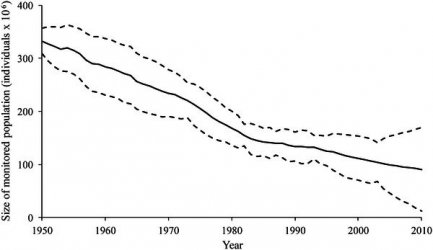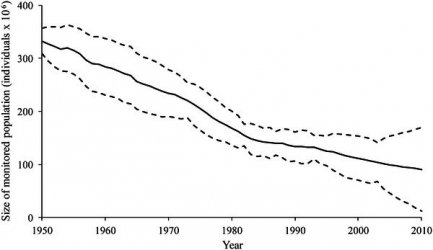Global trends show seabird populations dropped 70 per cent since 1950s
Media Release | July 9, 2015
Read more: http://news.ubc.ca/2...nt-since-1950s/
Damn, life is dying all around us but yet it isn't happening within the minds of some. damn.
---
The minds of some, like those anthro climate change and tobacco-cancer deniers, are ego-centric, and are AQ challenged (AQ = Awareness quotient).
Or, they are plain stupid and easily influenced by Con artists ... in the 1% portion of the Repub party.
According to their minds, these causes are not related to human activity:
"The dramatic decline is caused by a variety of factors including overfishing of the fish seabirds rely on for food, birds getting tangled in fishing gear, plastic and oil pollution, introduction of non-native predators to seabird colonies, destruction and changes to seabird habitat, and environmental and ecological changes caused by climate change."
Hey PK1 -- Of ALL those causes -- why do you have to come out swinging for Global Warming to be the ONLY eco issue worth discussing? What do you think the chances are that the 0.4deg change in your lifetime is the DRIVING cause of this tragedy?? We should be working to understand and fix this --- not letting our "programming" interfere with whatever eco causes need to be addressed..
---
Re: "why do you have to come out swinging for Global Warming to be the ONLY eco issue worth discussing?"
Huh? The anthro-eco issues mentioned in the article included "overfishing of the fish seabirds rely on for food, birds getting tangled in fishing gear, plastic and oil pollution, introduction of non-native predators to seabird colonies, destruction and changes to seabird habitat".
It was probably because you OPENED that post with "climate deniers === tobacco deniers".. and the "not caused by human activity" and digs at Repubs. (not that I protect Repubs)
Sorry if you're actually aware that this likely has nothing to do with any of that..
---
Yes, I assumed that those blindly critical of this research paper were also blindly following the AGW deniers, many of the same folks who supported tobacco company denials. Perhaps I am mistaken, especially if they have a good scientific argument.
For the record, as an independent SR libertarian, I criticize both Dems & Repubs who don't think for themselves.
Well that's refreshing honest and open. As a longtime Libertarian -- Welcome to USMB and let's talk about the long list of Eco projects that the GW freight train has delayed..





